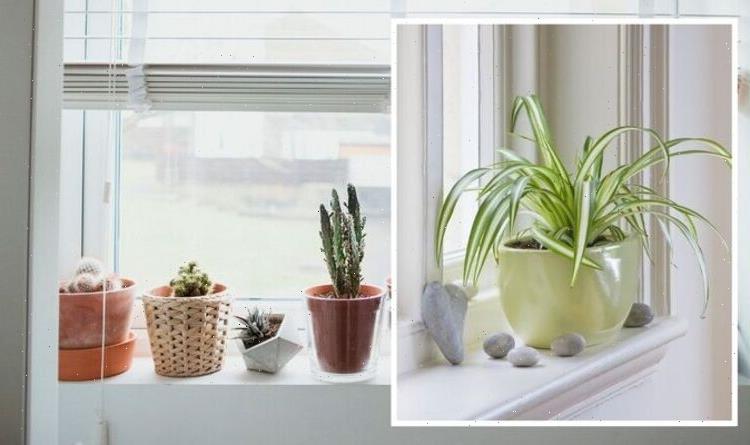Houseplants: RHS advises on watering techniques
We use your sign-up to provide content in ways you’ve consented to and to improve our understanding of you. This may include adverts from us and 3rd parties based on our understanding. You can unsubscribe at any time. More info
According to Gardening Know How, seven out of 10 millennials consider themselves a plant parent, with the trend expected to continue. With houseplants adding colour to any room as well as providing other benefits such as purifying the air, one expert at Safestyle UK has shared “key tips” on keeping indoor plants alive.
Adam Pawson, Head of Digital at the UK’s leading door and window provider, Safestyle UK, commented: “You’ll want to bear in mind that most of the houseplants you invest your efforts in will have more chances of surviving where there’s maximal sunlight exposure, making your windowsill the perfect spot.
“The most practical windowsill plants include succulents, cacti, venus fly traps, and monstera obliqua.
“As these particular plants are ideal for heavy heat and sunlight, this makes them perfect for people who find it difficult to care for their plants.
“In fact, most professionals agree that you should only water your cacti and succulents once a week during the hotter months, and only every four to six weeks in the colder months, leaving not much to go wrong.”

According to the expert, east and west-facing windows are the “second-best” locations for plants but will be “seriously stunted” without the help of a south-facing window.
Adam added: “South-facing windows are best suited for plants that can withstand luminous conditions, such as the succulents and cacti previously discussed.
“If you don’t have access to a south-facing window or are looking to branch out, consider a steamy bathroom windowsill that provides the perfect conditions for a monstera or a cheese plant.”
When it comes to looking after houseplants, the expert shared three “key tips”, including choosing the right pot, optimising sunlight and getting a watering routine together.
DON’T MISS:
Home renovations to ‘add value’ to your property – ‘massive asset’ [COMMENT]
Mrs Hinch fans share ‘easy’ hack to clean patio – ‘came up sparkling’ [EXPLAINER]
Alan Titchmarsh shares ‘trick’ to looking after orchid houseplant [EXPERT]
The right container should have drainage holes at the bottom to make sure it doesn’t become waterlogged.
The expert said: “Watch out for telltale signs that you need to repot your plant, often roots grow out of the drainage holes or push the plant up and out of the planter, indicating you need to choose a bigger planter.
“Next, consider a windowsill that is reasonably warm and receives a good amount of sunlight, your plant, on average, should receive about five hours of light a day.
“Plants are much more likely to die in cold environments, anything below 15 degrees celsius is considered too cold for your houseplant.

“If your plant is wilting or displaying split stems or bark it may be needing a temperature increase.”
Overwatering houseplants is one of the main reasons they die, caused by root rot which starves the plant of oxygen.
Depending on the plant, houseplants may need to be watered every few days, while others will struggle with too much water.
Adam said: “In fact, the leading cause of death in houseplants is overwatering due to the common misconception that you should be watering your plants whenever you get a spare minute.

“If your plant is wilting or its leaves are turning brown, this could be a sign that you’re overwatering it.”
For households with damp issues, houseplants could also reduce the problem.
The expert explained: “Unbeknownst to many, your houseplants can actually help to control the humidity levels in your home.
“Humidity absorbing houseplants serve as a dual purpose as they harvest the moisture they need from the air and bring the outdoors in.
“Since high moisture in the home can cause severe condensation issues, often causing mould and dampness amongst a multitude of other issues, houseplants are a perfect counter solution.”
Source: Read Full Article
